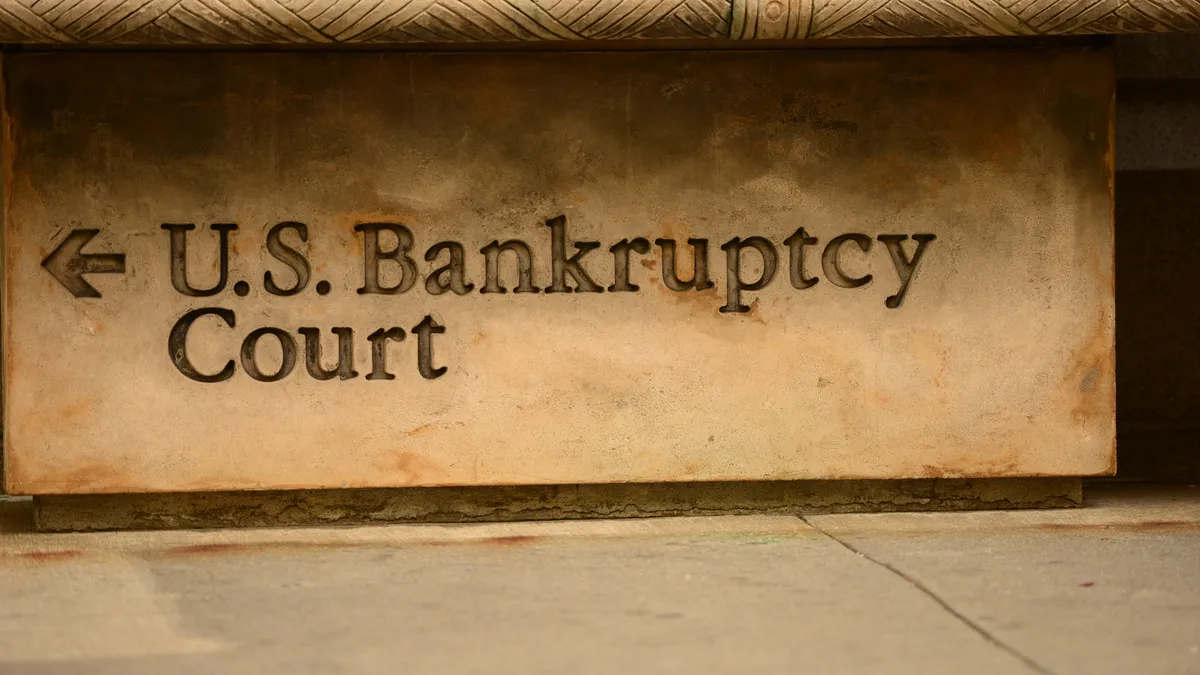Dive Brief:
- The Education and Justice departments have a new process for addressing federal student loan borrowers who attempt to discharge their debt through bankruptcy, they said Thursday, departing from the government's previous practice of opposing bankruptcy discharges by default.
- Justice Department attorneys now have clear standards under which they can recommend a bankruptcy discharge without requiring difficult and time-consuming investigations, according to the agencies. Bankruptcy judges make the final determination whether borrowers should receive discharges.
- The new process should help borrowers know whether they meet requirements for a bankruptcy discharge, the agencies said.
Dive Insight:
The federal student loan system that supports U.S. higher education has been under intense scrutiny in recent years as the government's portfolio ballooned to over $1.6 trillion. Problems piled up with dysfunctional loan servicing, public service loan forgiveness and other rules intended to protect those who owe money on student loans, such as borrower defense to repayment — a set of debt-cancellation rules for borrowers misled by their colleges.
The Biden administration has taken several steps to try to cut down on student loan debt, including a broad-based debt forgiveness program clearing $10,000 or $20,000 from most borrowers' loan balances. The administration also attempted to improve borrower protection systems with new regulations and with steps like a newly approved class-action settlement intended to clear out a borrower defense backlog.
These efforts have been controversial politically and legally, often ending up in court. But they're important in part because student loan borrowers don't have access to the same bankruptcy protections as those who owe other forms of debt.
Congress has dictated that bankruptcy petitioners must pass a higher bar for student loan relief than for other types of debt. Student loan borrowers must show they will be under "undue hardship" unless their debts are cleared.
Bankruptcy courts use several factors to determine undue hardship: whether a borrower would be unable to maintain a minimal standard of living, whether hardship would continue through much of the loan repayment period, and whether the borrower made a good-faith effort at repayment. Proving such hardship is difficult, leading to a long-held belief that student loans were virtually impossible to discharge in bankruptcy.
That's been changing in recent years as problems with student loan debt have drawn more attention, including from judges and lawyers. But consumer advocates still argued the process was unfair and often arbitrarily applied.
"Even though a borrower is in such desperate financial circumstances as to need to file bankruptcy, the government would typically argue that the borrower is not suffering 'undue hardship,'" John Rao, a staff attorney at the National Consumer Law Center, said in a statement. "This additional barrier to debt relief for student loan borrowers was put in place by Congress and was not the result of careful analysis and thoughtful policy debate. Instead it was based on the false premise that student borrowers were more likely to abuse the bankruptcy system, even compared to other consumers with debts owed to the government."
Officials want the newly announced process to make student loan bankruptcy proceedings less onerous for all involved, according to a Justice Department memo.
"The new process is intended to streamline the handling of student loan discharge cases for both Department attorneys and debtors, ensure greater transparency for everyone involved in these cases, and lead to fairer, more consistent results, in which the government agrees to recommend discharge in situations where the facts support it," it said
Under the new process, debtors will complete a form so the government can evaluate their request for a bankruptcy discharge. The Justice and Education departments will review that information and consider whether a case meets the definition of an undue hardship. They can then decide to recommend a full or partial discharge.
Consumer advocates greeted the new policy with cautious optimism. But they called on Congress to make additional changes.
“The new guidance has the potential to provide a meaningful avenue for relief but its effectiveness will depend on how it is implemented by the Departments of Education and Justice,” Rao said.













